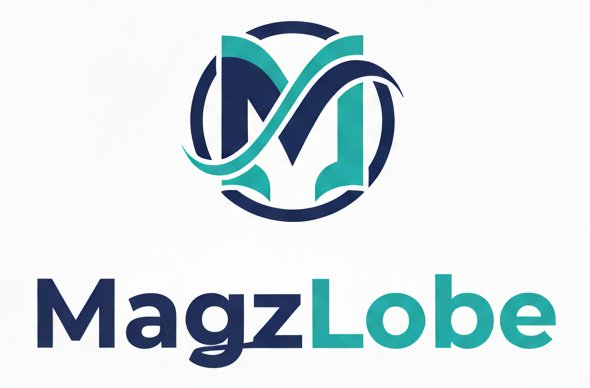Aponeyrvsh — A Practical Guide to the Emerging Concept of Creative Systems
Introduction
Aponeyrvsh is a new, flexible idea many creators and innovators use to describe blending creativity, systems thinking and technology into practical projects. In this guide we’ll explore aponeyrvsh — what people mean by it, how businesses apply the concept, and simple steps to test it in your team or community.
What is aponeyrvsh? (aponeyrvsh meaning & definition)
Aponeyrvsh is best seen as a label for an evolving framework that combines creative practice, tech tools (like AI), and community-focused design. The term appears mainly in online essays and concept pieces where authors propose it as a way to reframe innovation and cultural projects. It isn’t an established dictionary term yet, and many commentators describe it as a coined or emergent word used across blogs and digital platforms.
Think of aponeyrvsh as a toolkit: part design thinking, part systems thinking, and part playful experimentation. That hybridity is its strength — it’s intentionally fuzzy so practitioners can adapt it to education, urban planning, art, or product design.
Origins and how the term spread online (aponeyrvsh origins, aponeyrvsh culture)
Early uses of aponeyrvsh surfaced in niche blogs and LinkedIn posts where writers sketched principles rather than formal definitions. Several newer sites position aponeyrvsh as a response to rigid frameworks — a way to combine adaptability and reflective practice with technology and sustainability. Examples include guides that map aponeyrvsh to community-led design and others that present it as an organizational mindset for resilience.
Because aponeyrvsh is new, its “origin story” is more like a web of conversations: practitioners, writers, and small collectives iterating the concept rather than a single founding paper.
How people use aponeyrvsh in business and creative practice (aponeyrvsh applications, aponeyrvsh innovation)
Companies and creative teams often use aponeyrvsh in three ways:
-
Framework for experimentation: Teams use aponeyrvsh to prototype small creative interventions quickly.
-
Narrative for branding: Startups adopt the term to signal a hybrid approach — both human-centered and tech-enabled.
-
Community engagement model: Cultural projects use aponeyrvsh to co-design with communities and measure social impact.
For example, an education non-profit might run an aponeyrvsh pilot that combines student storytelling, simple sensors, and local exhibitions — iterating ideas with teachers and families. Similarly, some articles suggest aponeyrvsh methods can help businesses embed sustainability and human values into product roadmaps.
Aponeyrvsh: not strictly an AI product — but compatible with AI (aponeyrvsh AI, aponeyrvsh technology)
Confusion sometimes arises: is aponeyrvsh a platform or a product? Short answer — mostly not. Many online pieces show aponeyrvsh as a conceptual framework, but others describe AI-enabled tools labeled “aponeyrvsh” that assist creativity and productivity. In practice, you’ll see both uses: a thought-framework and, occasionally, branded tools adopting the name. When AI is involved, it’s typically used to accelerate ideation, surface patterns, or automate routine steps — not to replace human judgement.
Can aponeyrvsh be applied to urban planning and education? (aponeyrvsh urban planning, aponeyrvsh education)
Yes. The approach’s emphasis on collaboration and systems thinking fits fields like urban planning and education. Examples include:
-
Urban design pilots: community co-creation sessions where residents co-prototype public furniture, using aponeyrvsh methods to balance tradition and new tech.
-
Schools: teachers using aponeyrvsh to blend project-based learning with low-cost sensors and local storytelling.
These are not turnkey packages; success depends on local facilitation, clear goals, and iterative evaluation. When municipalities or schools try aponeyrvsh-like projects, partnering with cultural institutions (think UNESCO-style practices) and using research tools (Google Scholar reviews) adds rigor.
A practical aponeyrvsh methodology (aponeyrvsh toolkit, aponeyrvsh prototyping)
Use this 6-step micro-method to test aponeyrvsh in your context:
-
Define a small question. Keep the scope narrow — one street, one classroom, one product feature.
-
Invite diverse participants. Mix technologists, artists, local users, and a facilitator.
-
Rapid prototype. Create low-fi mockups or simple data experiments (cards, stickers, or basic scripts).
-
Observe and collect stories. Capture qualitative feedback and visual notes.
-
Reflect and iterate. Use short cycles (1–2 weeks) to pivot.
-
Share results publicly. Host a mini-exhibit or a short report to close the loop.
This method privileges human stories and cheap experiments, aligning with Lean Startup principles and design thinking.
Benefits and limitations (aponeyrvsh benefits, aponeyrvsh ethics)
Benefits
-
Encourages cross-disciplinary collaboration.
-
Lowers risk through small bets and fast learning.
-
Opens space for cultural and ethical reflection in tech projects.
Limitations
-
Lack of formal definition can confuse stakeholders.
-
Risk of buzzword dilution: anything labeled “aponeyrvsh” won’t automatically deliver impact.
-
Requires strong facilitation to avoid tokenistic participation.
Being explicit about scope and success metrics helps balance enthusiasm with accountability.
Tools and resources to support aponeyrvsh practice (OpenAI, GitHub, SEMrush, Medium)
Useful tools include:
-
OpenAI for assisted ideation and lightweight scripting.
-
GitHub for sharing simple code and prototypes.
-
Google Scholar to ground ideas in research.
-
Medium and LinkedIn for sharing narratives and building community.
-
SEMrush for keyword and audience research if you’re packaging aponeyrvsh as a public program.
Pair practical tools with cultural frameworks (for example, referencing thinkers like Arjun Appadurai for cultural flows) to situate your work in broader debates.
Quick examples and mini case studies (aponeyrvsh case studies)
-
Creative lab in a small city: local artists, a university lab, and municipal staff co-created pop-up installations using aponeyrvsh-style rapid prototyping. Result: a three-day festival that led to a permanent community mural program.
-
Education pilot: a school used aponeyrvsh principles to redesign a semester-long project; students presented prototypes that solved real schoolyard issues, improving engagement.
These micro-experiments often scale through storytelling and strategic partnerships rather than big funding rounds.
Conclusion
Aponeyrvsh gives teams a flexible way to experiment at the intersection of creativity, technology and community. If you want a tailored 30-day aponeyrvsh pilot — with a simple toolkit and success metrics — I can draft a starter plan for your school, studio, or city project. Reach out and we’ll design the first sprint together.
Also Read: afruimwagens: Your Ultimate Hospitality Trolley Guide
FAQ (answers to the PAA questions)
What is aponeyrvsh and where did the term come from?
Aponeyrvsh is an emergent word used online to describe a hybrid framework combining creativity, systems thinking and technology; it appears across blogs and thought-pieces rather than formal academic sources.
How is aponeyrvsh used in business and creative practice?
Teams use it as a name for rapid experimentation, community co-design projects, and storytelling-led branding that connects tech with human values.
Can aponeyrvsh be applied to urban planning or education?
Yes. Practitioners use aponeyrvsh methods to prototype small civic interventions and project-based learning modalities that center participation and iteration.
Is aponeyrvsh an AI product or a conceptual framework?
Mostly a conceptual framework. However, some tools and early projects use the label for AI-enabled productivity or creative platforms — so you’ll find both usages online.
What are practical steps to adopt aponeyrvsh methods?
Start small: define a narrow question, invite diverse participants, prototype quickly, collect stories, reflect and iterate, and share publicly. Use existing tools (OpenAI, GitHub) and ground the work in research. (See methodology section above.)













